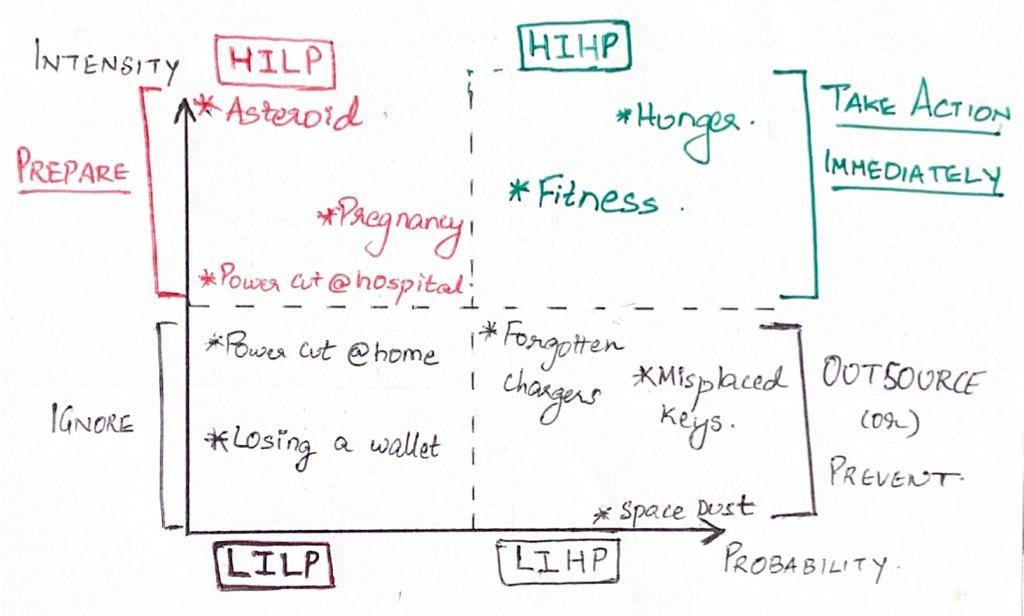Archetype 2: Priority = Probability of the action * Intensity of the action (Tweet this)
Valentines week. A few of the happiest people in this week are the contraceptive companies. The sales of condoms and contraceptives almost double on V-day. This is despite the odds of pregnancy being just around 20%. The intensity (risk) of the action is so high that lovers prioritize contraceptives, even in the heat of the moment. This is Good thinking! And the purpose of “Archetypes” is to appreciate and explore good thinking. Let’s do that!
Unfortunately, this good thinking on a V-day is not consistent on other days, especially for the High Impact - Low Probability events (HILP). It could lead to farmers losing crops due to sudden rains mid-summer, power blackouts (Texas) and even the death or birth of a civilization.
While HILP events are of our major concern, let’s get the other events out of our way.
High Impact - High Probability (HIHP) events are too easy to act on. If any government, business or individual is missing on these things, it is a matter of concern. For instance Hunger, Employee Retention, Fitness.
Low Impact Impact - High Probability (LIHP) events are those recurring irritating things. Like misplacing keys, forgetting chargers. Given high probability of these events, businesses develop around them — from Locksmiths to Swiggy Genies. You can either depend on them for LIHP events, or take some preventive steps if you want to be more disciplined.
Low Impact - Low Probability (LILP) events can just be ignored. Ever since UPI came into existence, I don’t carry cash in my wallet. Initially it led to a couple of awkward moments (especially when I was on a date). But now I can comfortably ignore my wallet given the ocean of QR codes around me.
The idea is to just push all negative events from other quadrants into LILP quadrant either by reducing probability or intensity. Positive events will be pushed to HIHP quadrant.
Dealing with HILP - Black Swan Events:
As a government: The invisible hand of the market gets paralyzed in the low probability events. (Tweet this). The best example is from astronomy. A life-ending asteroid would hit earth only once in some lakh years. No generation has the immediate probability of getting hit by an asteroid. But NASA spends about $150 Million on planetary defense every year. Epidemics, Disasters, Wars, Climate Change … a government that thinks better should focus on these HILP events than selling cinema tickets and mutton.
As a business: A HILP event can kill a business and people around it. Think Bhopal Gas Tragedy. Business schools teach risk matrices to help leaders think through these events better. COVID-19 was one such event and leaders are now increasingly opting for asset-light business models.
As an individual: There are a few simple things that prepare us for HILP events. Learning CPR tops this list. It could be rare to find someone with a cardiac arrest. But learning CPR helps you save a life. And this could one of your loved ones.
Let’s make a list of other life-saving things one should know to be prepared for HILP events. I’ll start the list. Always wear a helmet :)




One of the HILP - always record all your phone calls. Although the probability of you getting abused over a call in pretty less, it makes a case for an air tight defense if it becomes a serious offense